Need Zoom tech support? Email Phyllis here.
(support available before sangha starts)
Dear Thay, dear friends,
This week, we will recite the Five Mindfulness Trainings, concentrate on the Second Training, True Happiness and continue our exploration of this week. If you were not with us last Monday, we explored part of Thay’s poem: Please Call me By My True Name
“...I am a frog swimming happily, in the clear water of a pond
And I am the grass-snake that silently feeds itself on the frog…”
As some of you know from previous sharings, I’ve been practicing (and not practicing:) with impermanence as my elderly mother changes in body and in mind. She is visiting us at present, and recently, I came face to face with my expectation that she would get “better” and my reaction to this “not happening”.
What comes up for me is this: how can we hold life and death, suffering and joy, at the same time?
The Second Mindfulness Training offers ways of practicing with this question. This week, I’m struck by a specific part of the training:
I will practice looking deeply to see that the happiness and suffering of others are not separate from my own happiness and suffering; that true happiness is not possible without understanding and compassion.
And, I’ve been exploring how this relates to the concept of “soft front, strong back”, originated by Zen Buddhist Roshi Joan Halifax. She describes it as follows:
“All too often our so-called strength comes from fear, not love; instead of having a strong back, many of us have a defended front shielding a weak spine. In other words, we walk around brittle and defensive, trying to conceal our lack of confidence.
If we strengthen our backs, metaphorically speaking, and develop a spine that’s flexible but sturdy, then we can risk having a front that’s soft and open, representing choiceless compassion. The place in your body where these two meet—strong back and soft front—is the brave, tender ground in which to root our caring deeply.”
After we have recited the Five Mindfulness Trainings, we’ll have time to share our experience with the practice.
Here are some questions you may wish to consider:
What is your experience with holding life and death, and/or joy and suffering at the same time?
What has helped/hindered your ability to hold both?
To what extent have you had/do you have a strong back and a soft front?
What helps, and what hinders your ability to have a strong back and a soft front?
I look forward to being together.
With love and a bow,
Marie
--------------------------------------------------------------------------------------------------------
True Happiness
Aware of the suffering caused by exploitation, social injustice, stealing, and oppression, I am committed to practicing generosity in my thinking, speaking, and acting. I am determined not to steal and not to possess anything that should belong to others; and I will share my time, energy, and material resources with those who are in need. I will practice looking deeply to see that the happiness and suffering of others are not separate from my own happiness and suffering; that true happiness is not possible without understanding and compassion; and that running after wealth, fame, power and sensual pleasures can bring much suffering and despair. I am aware that happiness depends on my mental attitude and not on external conditions, and that I can live happily in the present moment simply by remembering that I already have more than enough conditions to be happy. I am committed to practicing Right Livelihood so that I can help reduce the suffering of living beings on Earth and stop contributing to climate change.

